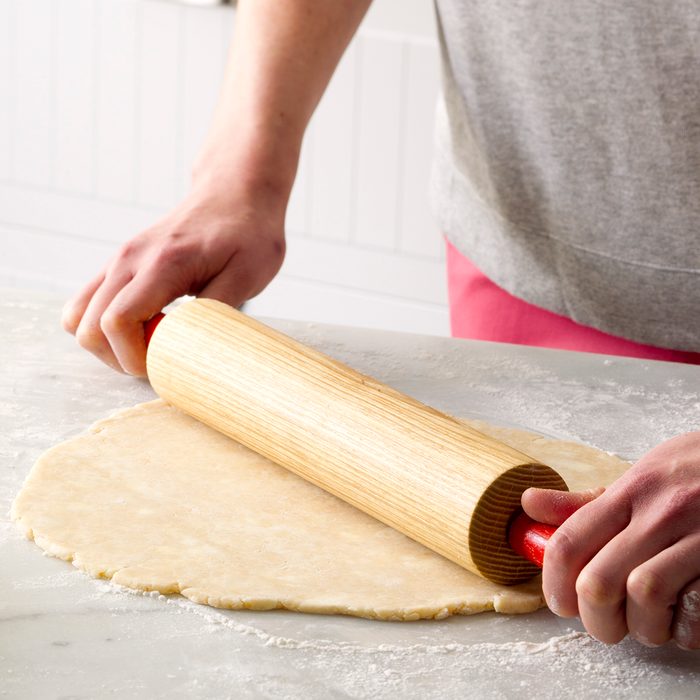
Step 1: Create a Great Pie Crust
A good crust is the foundation for any pie, lattice-topped or otherwise. Our Test Kitchen loves this basic butter pie pastry recipe. Be sure to follow our step-by-step guide to making pie crust if it’s your first time.
Once your pastry is chilled, roll it out just as you would for the base layer of the pie. You’ll want to work with those same dimensions.
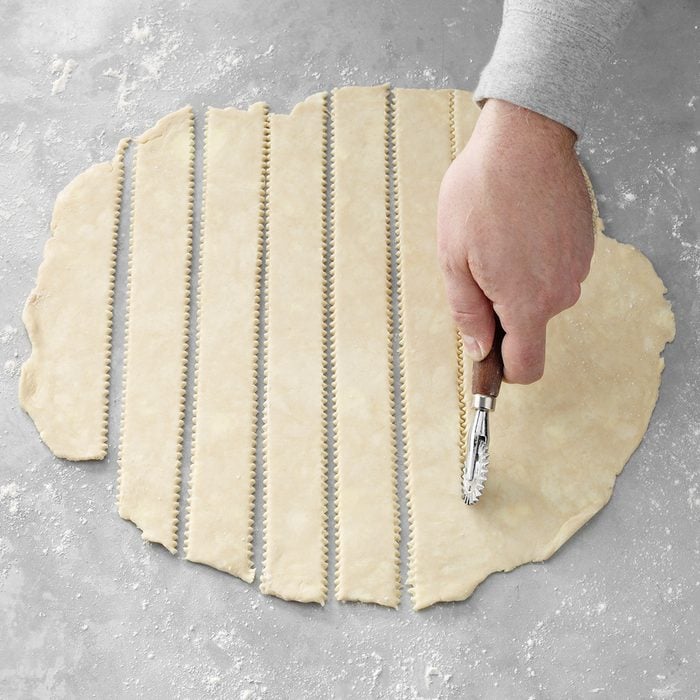
Step 2: Cut Strips of Pastry
The next step is to cut out your strips of pastry. You can use a pizza cutter for this job, or you can try a pastry cutter to get those neat zig-zag edges. (This pastry cutter is just one of a few of our favorite pie-baking tools.) To prevent the blades from sticking to the dough, dust the edges with flour.
You can cut strips thick or thin (though, we’d advise no wider than an inch). The thinner the strips, the more weaving you’ll have to do, so we recommend wider strips for beginners.
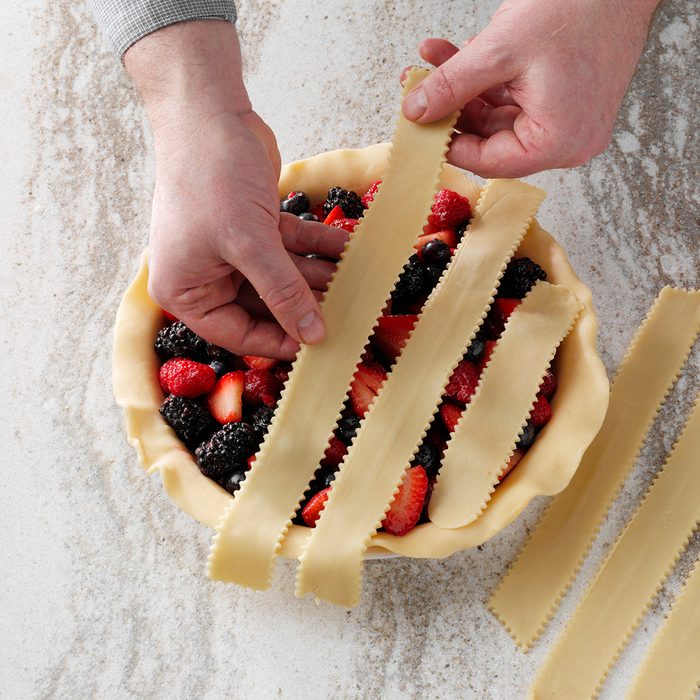
Step 3: Place Your First Layer of Lattice
Next, lay out your first layer of lattice going in one direction. Leave at least a half-inch space between each pastry strip. This will help give you some definition and will allow steam to escape from the pie.
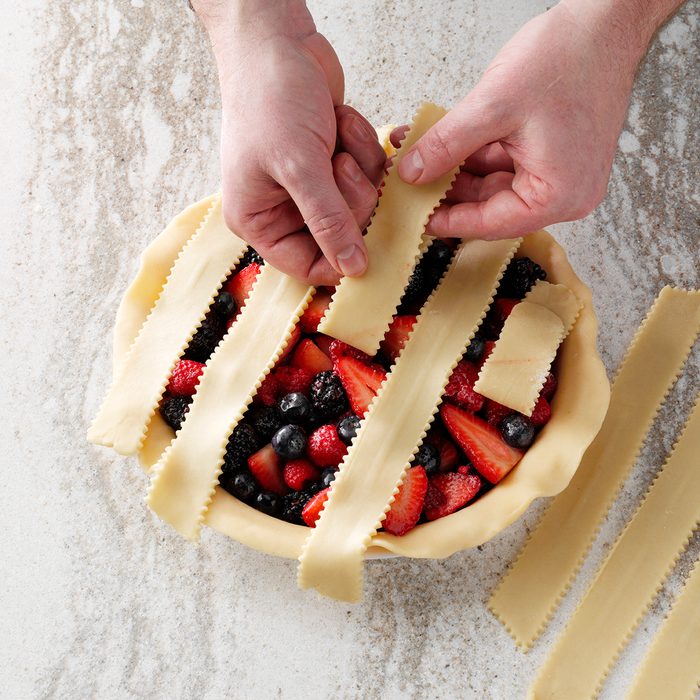
Step 4: Fold Back Every Other Strip
With that first layer of pastry down, you’ll want to fold back a few strips. Fold every other piece back about halfway. This lays the foundation for your first crossways piece of lattice.
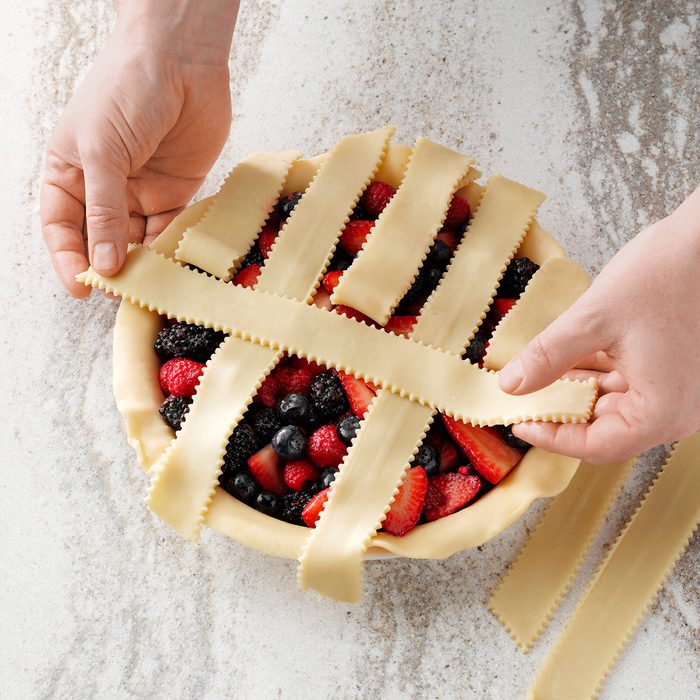
Step 6: Lay the First Perpendicular Strip
With those initial pieces of pastry pulled halfway back, lay the next strip perpendicular. Fold the other pieces back over the top, and you’ve got your first woven section!
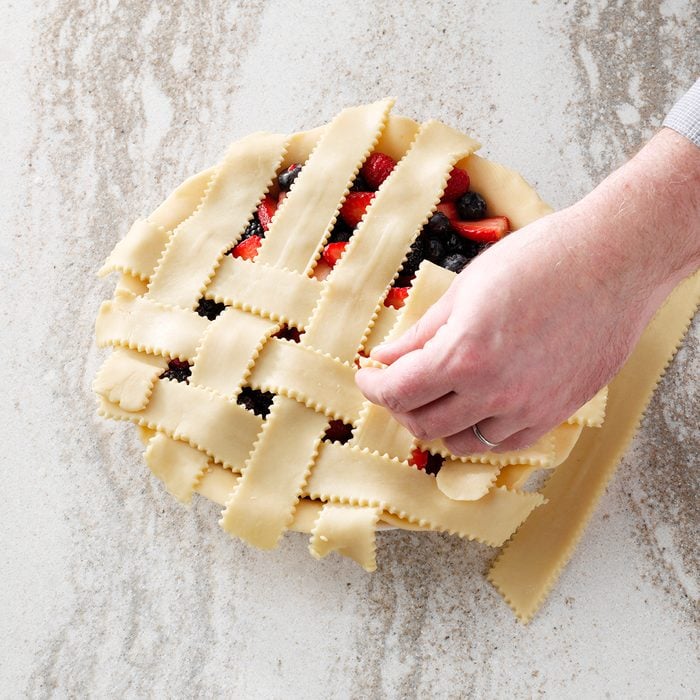
Step 7: Repeat, Repeat, Repeat
Now that you’ve got the hang of folding over and weaving, you’ll just keep repeating this process, alternating strips as you go. Eventually, you’ll fill the entire pie.
And if your strips break or crack—don’t worry. You can patch them up using a bit of water as glue (or hide any cracks under the weave—we won’t tell).
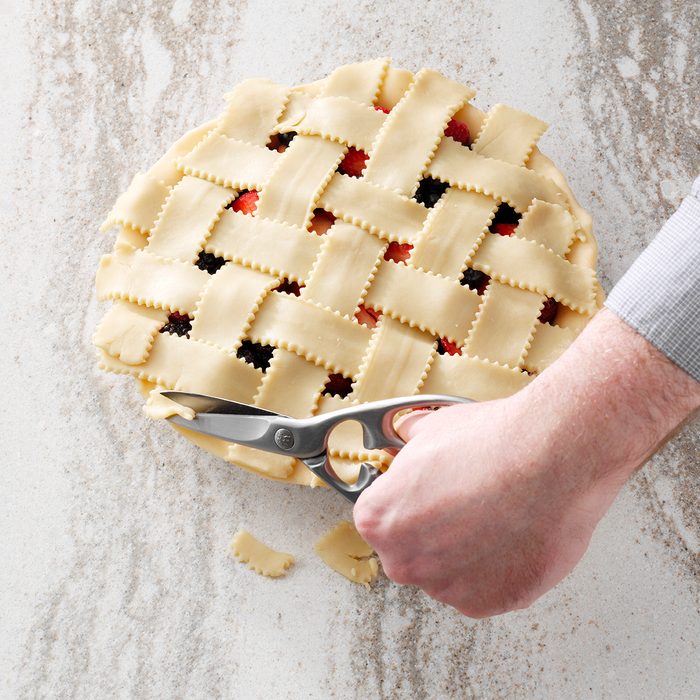
Step 8: Trim the Edges
Once your lattice is complete, you can trim the edges. Leave about an inch of pastry around the perimeter and trim any excess.
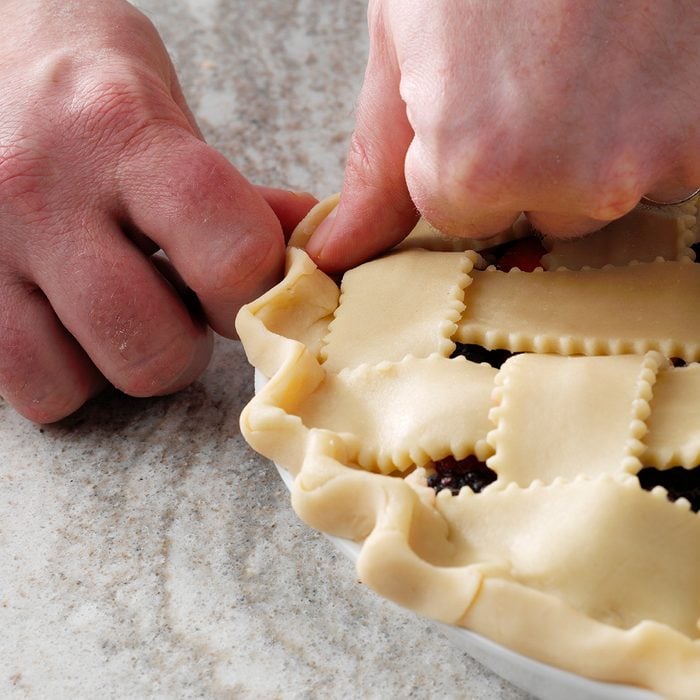
Step 9: Crimp
Finish up the pie by crimping or pinching the inch of pastry you left around the edge. You can try other methods, too, like a rope finish or braiding. If you want to try one of these, we’ve got the details on how to make other decorative pie crusts.
Once the edges are finished, you’re ready to pop the pie in the oven! Now check out some amazing lattice-topped pie recipes to get you even more excited about trying this technique out at home.
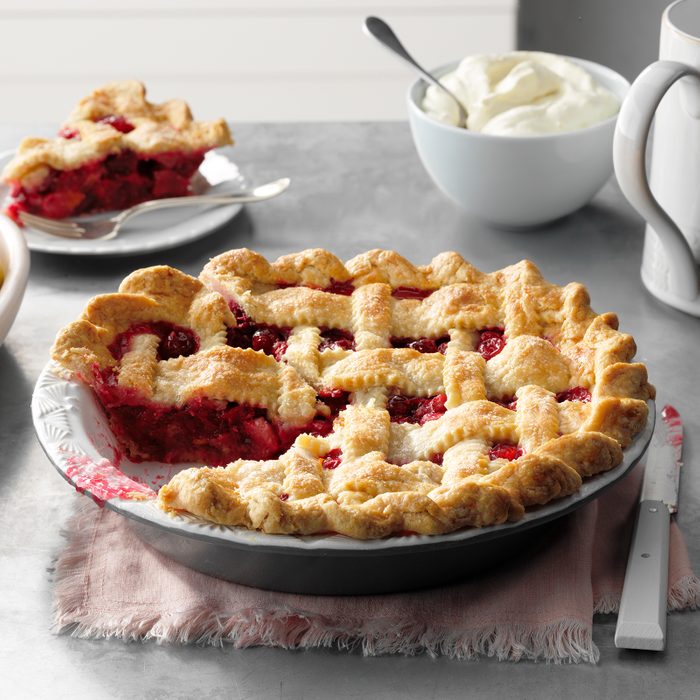
Tips for Making a Lattice Pie Crust
Keep these tips in mind for a successful first lattice:
- Opt for a butter pie crust—or a pie crust made with a combination of butter and shortening—when you want to make a lattice. Lard pie crusts, shortening pie crusts and oil pie crusts (or pie crusts made with oil, like an almond flour pie crust), are much more delicate and will break more easily than a butter pastry.
- Keep the pie dough cold to set yourself up for success. It’s more firm and less elastic than warm dough, which is important since you’ll be working with your hands, which already makes it warmer. Firm strips of lattice will be easier to work with than flimsy, stretchy ones!
- The best pies for lattice tops are fruit pies, since double-crusted fruit pies usually need slits cut into them to let steam escape during baking anyway. Instead, the lattice works as a natural vent. Plus, the color contrast between the fruity filling and the neutral dough will make the lattice that much more striking.
- Prevent your lattice from browning too quickly by covering the whole pie loosely with tin foil to keep it from getting too dark. This is called a pie crust shield. However, our Test Kitchen doesn’t usually have problems with lattice crusts browning too quickly—so you might not, either.
